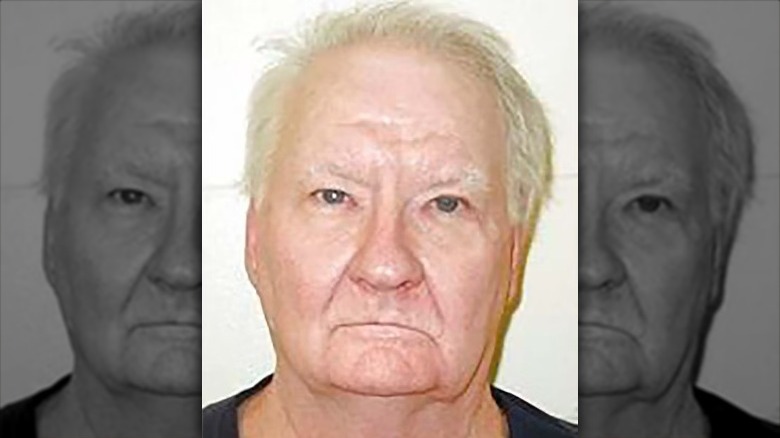Why Convicted Murderer Benjamin Schreiber Was Almost Released From Prison
In July 1996, Benjamin Schreiber plotted with John Dale Terry's girlfriend to rid their lives of the 39-year-old man. Schreiber beat Terry to death with the handle of a pickax, abandoning the body next to a vacant trailer outside the rural town of Agency, Iowa (via Washington Post). Oxygen tells us that the murder weapon was later discarded out the window of Schreiber's moving vehicle. When it was recovered, it still had the blood and hair of the victim caked on it.
Schreiber was soon arrested and charged with first-degree murder. In a 1997 trial, the court gave the middle-aged man the harshest penalty in the state's power, life without the possibility of parole. He was remanded to prison and, despite an appeal, was set to spend the rest of his life behind bars.
At 44 years old when he was sentenced, this meant the possibility of decades behind bars. Years later, a medical emergency led to a legal argument that potentially could have set the convicted murderer free (although it wouldn't be the most shocking thing to happen in true crime).
Schreiber was revived five times in a hospital
According to court records, Benjamin Schreiber's medical woes began with kidney stones. These grew to such a size that he could no longer relieve himself. Blocked kidneys can only hold so much, which led to Schreiber's urine backing up in his system. The waste eventually caused Schreiber to develop sepsis, a serious blood infection. If left untreated, sepsis can cause a severe drop in blood pressure, dizziness, and death, according to the CDC. He was found unconscious in his prison cell and rushed to a hospital. While being treated, Schreiber had to be resuscitated five times via adrenaline injected into his bloodstream.
Schreiber filed for relief with the Iowa courts, claiming that he should be immediately released from prison. As he died (but was revived) in the hospital, he argued that his life sentence had been served. The Des Moines Register reports that Schreiber stated that his sentence was life without parole, "not life plus one day." He was denied but appealed the ruling to the Iowa Court of Appeals.
In their ruling, the panel of judges wrote "We conclude the correct reading of section 902.1(1) requires Schreiber to stay in prison for the rest of his natural life, regardless of whether he was resuscitated against his wishes in 2015" (via Iowa Courts). He remains incarcerated. As odd as this court case sounds, it is not the first time this argument has been made by a convicted killer.
The case of Jerry Rosenberg
In 1962, Jerry Rosenberg had already served four years in the clink for armed robbery, and his latest one was about to go south for the ex-con. When two police officers responded to the call, Rosenberg shot and killed them. After living on the run for a time, he eventually turned himself in. He and his partner in the botched robbery were given death sentences (though they likely would have sat on death row for a long time), which were later commuted to life in prison without the possibility of parole (via The Independent).
In 1986, Rosenberg was undergoing emergency heart surgery. When he recovered, he argued that because the surgeon had to stop his heart for a time during the procedure it meant that he had medically been dead. He pushed for his release from prison, as his "life sentence" had been fulfilled. Rosenberg's case was heard by a court in 1988. He, like Schreiber, was not successful in his argument for release for time served. According to the Associated Press, written testimony for upholding his sentence included Dr. Erik Mitchell, Onondaga County's medical examiner. "Thousands of people undergo bypass surgery, recover, and are, therefore, not pronounced dead."
Rosenberg became a famed jailhouse lawyer while incarcerated, helping as many as 200 convicted felons attempt legal relief. In 1986, he was portrayed by Tony Danza in a made-for-TV biopic on his life, titled "Doing Life" (per IMDb). Rosenberg died in prison in 2009.


